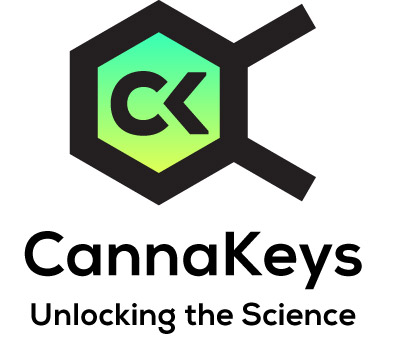Eucalyptol Research Dashboard
What am I missing as a non-subscriber?
To see a full dashboard with study details and filtering, go to our DEMO page.
As a subscriber, you will be able to access dashboard insights including chemotype overviews and dosing summaries for medical conditions and organ system and receptor breakdowns for cannabinoid and terpene searches. Study lists present important guidance including dosing and chemotype information with the ability to drill down to the published material. And all outputs are fully filterable, to help find just the information you need. Stay up-to-date with the science of cannabis and the endocannabinoid system with CannaKeys.
CannaKeys has 61 studies associated with Eucalyptol.
Here is a small sampling of Eucalyptol studies by title:
- Eucalyptol targets PI3K/Akt/mTOR Pathway to inhibit Skin Cancer Metastasis
- Anti- Salmonella and Antibiofilm Potency of Salvia officinalis L. Essential Oil against Antibiotic-Resistant Salmonella enterica
- Anti-inflammatory effects of lavender and eucalyptus essential oils on the in vitro cell culture model of bladder pain syndrome using T24 cells
- 1,8-cineole ameliorates ischaemic brain damage via TRPC6/CREB pathways in rats
- Analgesic Potential of Terpenes Derived from Cannabis sativa
Components of the Eucalyptol Research Dashboard
- Top medical conditions associated with Eucalyptol
- Proven effects in clinical trials for Eucalyptol
- Receptors associated with Eucalyptol
- Individual study details for Eucalyptol
Ready to become a subscriber? Go to our PRICING page.
Page Quick Links
Select New Terpene
Overview - Eucalyptol
What is Eucalyptol?
Eucalyptol, also known as Cineole, is named after the tree in which it is found to be most abundant, the eucalyptus tree.
It is used in insect repellents and insecticides and frequently in the cosmetic (mouthwash) and chemical industries (e.g., cleaning agents) as a flavor and scenting agent.
It has a mint-like cooling scent.
Eucalyptol has properties that are anti-inflammatory, antioxidant, anxiolytic, cough suppressant, mucolytic, bronchiolitis, choleretic, anticancer, antiseptic, and antimicrobial.
Is Eucalyptol safe?
Eucalyptol is a colorless liquid that has been given GRAS (generally recognized as safe) status though the isolated form can cause skin irritation and gastrointestinal upset if ingested.
Scent Description
Minty, cooling, earthy
Natural Sources
Eucalyptus, tea tree oil, rosemary
Cannabis Cultivars High in Eucalyptol
Super Silver Haze, Girl Scout Cookies, Bubba Kush
Eucalyptol Properties and Effects
Eucalyptol may induce the following properties or effects:
- Analgesic
- Anti-inflammatory pain (A. Horváth et al., 2022)
- Anti-asthmatic (H. Worth et al., 2012)
- Anti-cancer
- Anti-metastatic (in skin cancer cells) (A. Rahaman et al., 2022)
- Anti-microbial
- Anti-bacterial (against Klebsiella pneumoniae) (Chew-Li Moo et al., 2021)
- Anti-viral (SARS-CoV-2) (M. Valussi et al., 2021)
- Anti-oxidant (G. Xu et al., 2022)
- Anti-tussive (reduces the frequency of coughs) (J. Fischer et al., 2013)
- Bronchodilator (L. Joy Juergens et al., 2020)
- Lung Protector (protects against acute injuries from cigarette smoke) (F. de Lima Gondim et al., 2019)
- Neuroprotective (C. Meng et al., 2021)
Reduces phlegm, cough, airway inflammation, rhinosinusitis, and nasal congestion (via enhanced ciliary clearing, mucolysis, anti-inflammatory, and bronchodilation)
Produces analgesia centrally and peripherally (via μ-opioid receptor activity, antioxidant, and anti-inflammatory effects)
May reduce anxiety in preoperative humans and anxiety/depression symptoms in mice (via GABA receptors)
Lung protective against inflammation and infectious causes potentially including COVID-19, in COPD, bronchitis, and in rats exposed to short-term cigarette smoke (via bronchodilatory, binding to COVID-19 proteinase, antioxidant, anti-inflammatory effects through selective downregulation of the PRR pathways, including PRR receptors (TREM-1 and NLRP3) and common downstream signaling cascade partners (NF-κB, MAPKs, MKP-1)
Neuroprotective in early brain ischemia in rats with SAH and stroke-induced ischemia (via reduced neuronal apoptosis, microglial activation, oxidative stress, and TRPC6/CREB pathways)
Potential role in preventing Alzheimer’s disease (via reduced oligomerization of amyloid beta peptide, antioxidant, and less iron-induced cell death)
It may be protective against certain cancers such as leukemia, ovarian, and skin cancer metastasis (via increased cytotoxicity and the PI3K/Akt/mTOR Pathway)
Antimicrobial effects against S. aureus, E. coli, E. faecalis, P. aeruginosa, C. albicans, and carbapenemase-producing Klebsiella pneumonia (via QS inhibition, anti-biofilm actions, and disruption of microbial cell walls and membranes)
In atherosclerotic rat models, it prevents the formation of atheromatous lesions, glycation, oxidative stress, and inflammatory markers, as well as improves glycemia, insulin resistance, lipid profile, renal function, and activity of glyoxalase-1 (GLO-I) (via reduction of glycation, oxidative stress, and inflammatory mediators)
Last reviewed by Dr. Abraham Benavides, M.D., 04-21-2022
Eucalyptol Receptor Binding
Endocannabinoid System (ECS) and Eucalyptol:
- CB1 (agonist) (N. Raz et al., 2023)
Endocannabinoidome (eCBome) and Eucalyptol:
Disclaimer
Information on this site is provided for informational purposes only and is not meant to substitute for the advice provided by your own licensed physician or other medical professional. You
should not use the information contained herein for diagnosing or treating a health problem or disease. If using a product, you should read carefully all product packaging. If you have or suspect that you have a
medical problem, promptly contact your health care provider.
Information on this site is based on scientific studies (human, animal, or in vitro), clinical experience, or traditional usage as cited in each article. The results reported may not necessarily occur in all individuals. For many of the conditions discussed, treatment with prescription or over-the-counter medication is also available. Consult your physician, nutritionally oriented health care practitioner, and/or pharmacist for any health problem and before using any supplements or before making any changes in prescribed medications.

